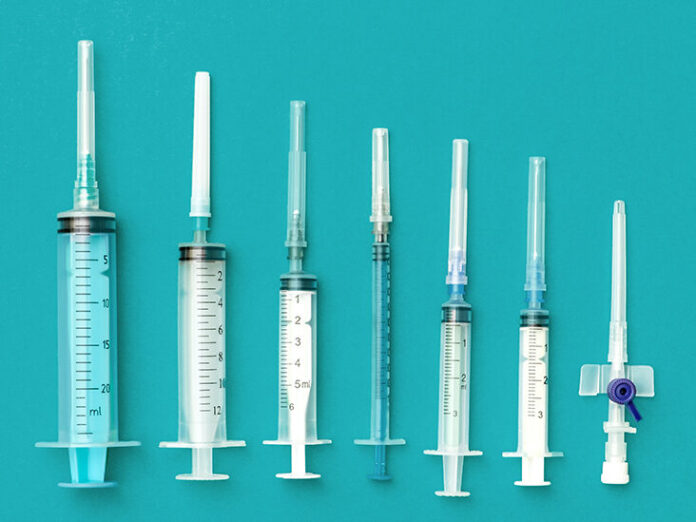With the looming deadline of 30th November 2021, the health sector is once again on the cusp of betterment. Since the early transition from glass syringes to plastic syringes in 1955, now auto-destruct syringes are ready to break new grounds in the health sector. Here is the one main query. Why do we need these AD [auto-destruct] syringes?
The earliest prototype of the syringe was made of glass, so that was expensive and was used repeatedly after cleaning with boiling water. Plastic syringes– a little development – for one-time use, better but not “the best.” The emergence of blood-borne diseases [1980] ended the euphoria over the development of plastic syringes, especially in developing countries where improper sterilization of used syringes and their reuse was a significant problem that still prevails. The reuse of those syringes creates severe problems in the form of outbreaks of diseases such as AIDS and Hepatitis. These blood-borne disease viruses transfer from one patient to another by using an improperly sterilized syringe.
In 2019, the outbreak of HIV in Larkana is a clear example of such condemnable acts of reusing the same syringe in all children. It has also been proved that the reuse of non-sterilized syringes is the leading cause of this endemic. A similar incident was reported in Gujarat in 2009. The reuse of syringes is still a common phenomenon that one can observe clearly in private health care facilities in Pakistan. To save money, health care practitioners use the same syringe for several innocent patients. To stop this malpractice, after the Larkana outbreak, the federal ministry of health established NTIS [National Task Force on Injection Safety] in November 2019.
After thorough consideration by all the stakeholders, a comprehensive plan of action was devised to stop importing, manufacturing, and selling plastic syringes. Therefore, no surprise if there is a nine percent prevalence rate of hepatitis C and the highest reporting of cases of AIDS in Asia. Undoubtedly, the usage of unsafe syringes is a significant factor but only one in all other contributing factors. Unauthorized medical practitioners and unreasonable use of injections are also playing havoc on people’s lives. The central dilemma is to instill an utterly wrong belief by health care workers that injection is mandatory even for minor illnesses. According to some statistics, Pakistan is at number one for administering injections– 9 to 10 injections per person per year. Eight out of nine injections are unneeded. AD syringe is the most significant development in putting an end to the spread of blood-borne diseases as its plunger gets stuck automatically after medicine administration. If one tries to release the plunger forcefully, it will break, and the syringe will become useless again.
There is a greater need to spread awareness about the proper use and disposal of AD syringes. That would only be possible by collective efforts at the national level. No doubt, Pakistan is going to set an example for other countries by eliminating the primary cause of blood-borne diseases
The Sindh government tried to implement the same practice of using AD syringes a decade ago with the name of “The Sind Regulation and Control of Disposable Syringe Act, 2010. The Act’s purpose was to stop manufacturing, selling, and using plastic syringes other than AD syringes. Implementation of the law was the primary failure at that time. After approval by the national task force, the manufacturer’s hard-line behaviour was the main problem. They highlighted the possible adverse effects on their business and the issue of new investment for profound changes in their manufacturing facilities. They argued that the reuse of syringes is not the main problem solely.
Improper medical waste disposal is one of the biggest problems. However, after three meetings, they asked for some time to make some alterations mandatory for changing the manufacturing system. So, a deadline was set. Government relaxation of taxes for all stakeholders (producers and consumers) is a breakthrough in this regard. That will help in fixing a minimal affordable price in comparison to conventional syringes. While fast-track registration of AD syringes for suppliers by DRAP [Drug Regulatory Authority of Pakistan], which could be a major hurdle, is also good. Despite many hurdles due to the coronavirus pandemic, the last date for importers to clear their stocks was 31st March 2021, and for manufacturers, it was 31st July 2021. It is good to see that out of 16 manufacturing plants, nine have been converted to AD syringe manufacturing facilities, while the transition of the remaining seven plants is in progress.
There is a greater need to spread awareness about the proper use and disposal of AD syringes. That would only be possible by collective efforts at the national level. No doubt, Pakistan is going to set an example for other countries by eliminating the primary cause of blood-borne diseases.























